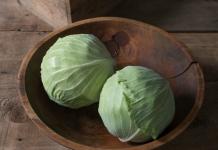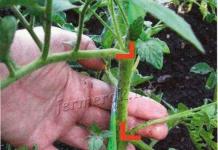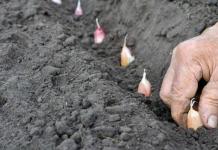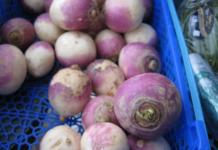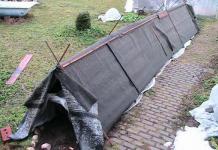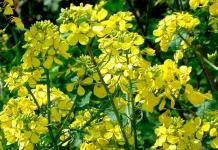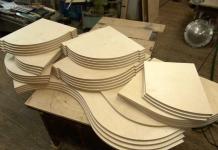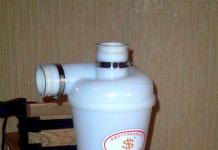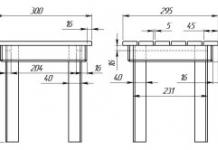Crop rotation involves improving the soil with previous crops and preparing the land for planting new crops.
The yield of vegetable and green crops depends on the correct crop rotation. Optimally selected order of alternation of plants from year to year, compatibility with each other, their correct placement guarantees a positive result.
Annual crops that grew last year directly affect the new crop. It depends on these plants what can then be planted in the garden, and what is absolutely impossible.
- After crops with a shallow root system, plants with deep, extensive roots should be planted.
- Early ripe plants cannot be planted after late crops; the soil does not have time to recover during such planting.
- After plants susceptible to damage by certain pests and diseases, those that have resistance to them are planted.
These are the basic principles in crop rotation.
For good growth and fruiting, plants need various trace elements.
For example,
- potatoes, beets, carrots need phosphorus, and cabbage needs nitrogen to grow.
- root crops with an extensive root system easily penetrate into the lower layers of the soil and extract potassium and phosphorus,
- leaf crops have short roots and receive useful substances in the upper layers of the earth.
- Tomato roots are nourished at a depth of one meter.
When planting on a plot of the same crop for several years in a row, one of the layers of the earth will be depleted. The next year or two, the harvest of any vegetables will be meagre. Weeds will grow and become difficult to control.
In addition, diseases can be transmitted from the remains of the roots of old plants to new plantings. Pests that have settled in the vicinity will gladly move to new beds.
To avoid these problems, it is necessary to rotate crops.
Plants from the same family can be grown in the same place no more than once every 3-5 years.
In addition, it must be taken into account that neighboring plants affect each other. Tomatoes can be planted next to cabbage, but the proximity of cabbage to carrots leads to suppression of the growth of the latter. With a small area of \u200b\u200bthe garden, it is difficult to observe a complete crop rotation, but if desired, it can be adjusted to your conditions and made as successful as possible.
First of all, to organize a crop rotation, you need to distribute the beds and create a plot diagram. In the scheme, enter all previous cultures.
The garden can be divided into 4 parts and for each crop, calculate the required amount of fertilizer.
- Cucumbers, zucchini and cabbage are planted on the first plot.
- On the second, you can plant eggplant, garlic, tomatoes and onions.
- In the third section, place root crops.
- On the fourth part, plant potatoes.
Plots in subsequent years are replaced counterclockwise. Such a crop rotation protects plantings from pests, weeds, diseases and saves on fertilizers.
In order to understand exactly which crops will grow in a particular place, you need to correctly build a chain:
Pepper ⇒ Cabbage ⇒ Onion ⇒ Potato ⇒ Cucumber ⇒ Garlic ⇒ Zucchini ⇒ Pea ⇒ Strawberry ⇒ Eggplant ⇒ Beetroot ⇒ Tomato ⇒ Carrot
Rotation table
| culture | Good predecessor | Possible precursor | Bad predecessor |
| Cucumbers, cabbage, beans | Beets, carrots, onions | Solanaceae (peppers, tomatoes, eggplants) | |
| Garlic, onion | Cucumbers, potatoes, legumes, carrots | Tomatoes, cabbage, beets | Onion, garlic, pepper, physalis |
| tomatoes | Cucumbers, cabbage, carrots, onions, greens | Beet | Any nightshade, physalis |
| Pumpkin (cucumber, zucchini, pumpkin, squash, melons) | Solanaceae, legumes, onions, cabbage | Greens, beets | Any pumpkin |
| Turnips, cucumbers, green manure, greens, cauliflower | Late and mid-ripening cabbage, onions, beets | Tomatoes, potatoes | |
| Garlic, onion | Potato, cucumber, legumes, cauliflower and early cabbage | Beets, tomatoes, onions, late cabbage | Greens, carrots |
| Cucumbers, green manure, legumes, cauliflower and early cabbage | Carrots, beets, greens, cabbage | Tomatoes, potatoes | |
| Legumes | Cabbage, onions, garlic, potatoes, cucumbers | Greens, tomatoes, green manure, root crops | Legumes |
| Greenery | Cauliflower and early cabbage, legumes, cucumbers, onions, green manure | Potatoes, tomatoes, greens, beets | Carrots, late cabbage |
What then can be planted on the site
Then you can plant pepper

Bulgarian pepper can be planted at the place where zucchini, carrots and cucumbers are grown. Then you can plant pepper
It pretty much depletes the soil. By the end of the season, various diseases accumulate in the ground (root rot, late blight, powdery mildew).
In the spring, in this area, after pepper, you can plant leeks, cabbage. It is not recommended to grow cucumbers and pumpkin crops in this place.
When organic matter is introduced to the site, a year must pass, and only then pepper can be planted at this place. An excess of organic matter is bad for peppers.

Hot peppers should not be planted after nightshade. These crops consume similar substances and when planting pepper, it will not receive the necessary nutrition and will grow poorly.
Hot pepper grows well, bears fruit in place of zucchini, beans, cucumbers.
After pepper, it is better to plant greens, radishes. You can plant pepper in one area with an interval of three years.
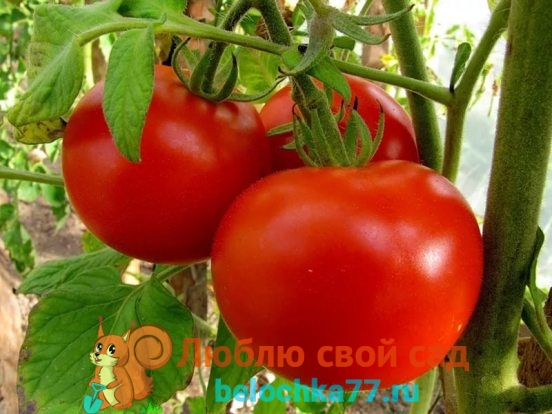
According to agrotechnical rules, it is impossible to plant tomatoes after nightshade crops.
Pests, diseases of these crops are the same, and they easily settle on new plantings.
Good predecessors for a tomato are: beets, peas, early cabbage, zucchini, corn, cucumbers, watermelons, carrots. Let's plant onions, root crops. To improve the taste, it is recommended to plant parsley next to the tomatoes.
When planting this plant for several years in a row, the earth becomes acidic. To eliminate this problem in the fall, slaked lime or chalk (100 grams per square meter) must be added to the soil (with deep digging). After this procedure, the soil becomes neutral and tomatoes can be planted again on the site.

Cucumbers are quite demanding on the quality of the soil and the place for planting these plants should be changed annually. It is forbidden to re-plant cucumbers in the same place. Since this plant depletes the soil and there will not be enough nutrients for the subsequent cultivation of the crop.
The best previous crops are: beets, greens, tomatoes, peas, potatoes, cabbage.
Cucumbers next to tomatoes, parsley, potatoes are bad. Do not plant pumpkin crops nearby. Excellent neighbors are legumes, peas, corn, lettuce, spinach and radishes.
Next year, legumes, garlic, and herbs can be planted on this site. You can’t plant melons in place of cucumbers, watermelons.

Heavy clay soil is not suitable for growing onions. Onions love light and loose, airy, nutrient-rich soil.
Good predecessors are plants, during the cultivation of which organic matter was introduced. Onions are planted after basil, radishes, lettuce, cabbage, cucumbers, potatoes, pumpkins, tomatoes, dill, zucchini.
Bad predecessors are garlic, celery. Onions perfectly coexist with green, vegetable crops, except for peas, sage.
After onions, you can plant peppers, beets, potatoes, cucumbers, cabbage and tomatoes.

Carrots are sown in place of nightshade, cabbage, green crops. Sowing in place of peas is allowed. Bad predecessors are bell pepper, parsnips, celery, parsley. These plants lead to carrot diseases and poor yields.
Good neighbors are tomatoes, onions, potatoes, lettuce and cucumbers. The smell of onions protects carrots from pests. And dill, on the contrary, attracts lacewings that feed on aphids and this is a natural defense against aphids. Bulgarian and hot peppers, parsley, squash, black radish can spoil the taste of carrots.
In place of carrots, you can plant potatoes, legumes, cabbage, tomatoes and strawberries.
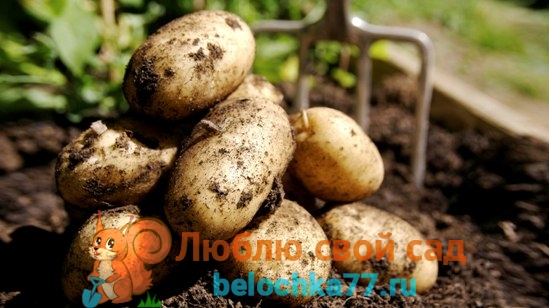
Onions, broccoli, cabbage, basil, beets, carrots and cucumbers are considered good predecessors for it. After harvesting the predecessors, you need to add compost to the soil and dig up the soil. Next spring, you can safely start planting potatoes.
Nightshade crops are considered the worst predecessors, they have common pests and diseases.
In one area, this plant is recommended to be planted at intervals of 2-3 years. If there is a need to plant potatoes in one area, a complex of fertilizers is applied to the soil. Sowing oats after harvest improves the quality of the land and disinfects it, allowing potatoes to be planted again in the same place.
Potatoes get along with corn, cabbage, beans. Cucumbers, pumpkins, tomatoes degrade the quality of the crop.
After potatoes, onions, cucumbers, garlic, parsley, zucchini, and beans are planted.

Strawberries can be planted after parsley, radish, garlic, peas, spinach, radishes, onions and beans. Garlic, onions and parsley over the next year can protect against pests. On depleted soil, mustard is a good predecessor.
The worst predecessors are: tomatoes, potatoes, Jerusalem artichoke, cucumbers, physalis, eggplants, sunflowers, ranunculus crops. After them, strawberries can be planted after four years.
This plant, with proper care in one place, grows for 4 years. After strawberries, eggplant, sunflower, celery, Jerusalem artichoke will grow well on the site.
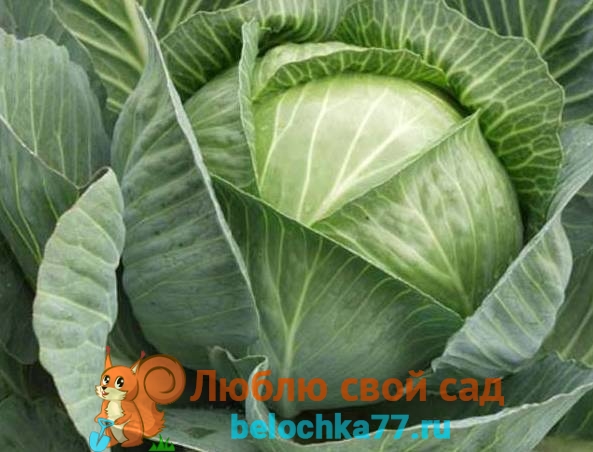
Cabbage in one area from year to year can not be planted. At the same time, the soil loses many useful substances and the next year the yield drops sharply.
Cabbage in this place can be planted after 3 years, while planting requires a large amount of fertilizer. After onions, potatoes, tomatoes, cabbage is forbidden to plant. Planting after peas, beans, carrots, beets is allowed.
A good predecessor are cucumbers, peppers, onions, herbs.
As neighbors, you can plant leeks, dill, any kind of lettuce, potatoes, radishes, borage. Dill, leek, lettuce and borage protect strawberries from insects. Marigolds, sage, mint, hyssop, parsnips can be planted around cabbage for additional protection.
When growing cabbage and celery in the neighborhood, the yield of both crops increases.
Carrots and beans are considered bad neighbors.
In its place, you can plant onions, Jerusalem artichoke, carrots, beets, potatoes, eggplants.
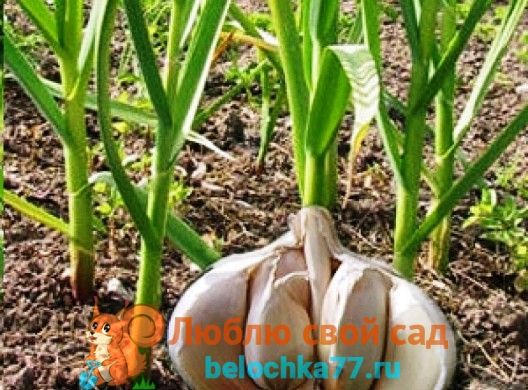
Garlic grows and develops in good light. With acidic soil, dolomite flour, slaked lime, crushed chalk or wood ash are added to it.
In one area, garlic grows no more than two years in a row. In the third year, a stem nematode may appear in the soil and harm plantings.
Garlic grows well after early cabbage, zucchini, cucumbers, potatoes. Suitable plants with a developed root system (celery, carrots, squash).
Do not plant garlic in place of onions. After garlic, you can sow peas, plant tomatoes, lettuce, corn, potatoes, cucumbers, eggplant, lettuce and get an excellent harvest.

Eggplants are moisture-loving and do not like shade. Lack of heat and light leads to a lack of fruiting. The plant is planted away from buildings, trees, shrubs, tall plants.
Eggplant can be planted after cucumbers, strawberries, onions, early cabbage, legumes, perennials, parsley, cilantro and dill. It is not recommended to grow eggplant in place of nightshade.
Eggplants practically do not deplete the soil and allow growing almost any crop in their place, the best result is seen when planting garlic, thyme, pumpkin, onion and root crops.
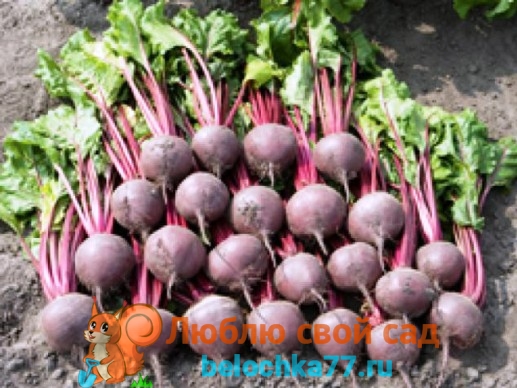
It is necessary to grow beets in one area no more than 1 time in 3 years. If planting is done more often, it will grow poorly, hurt and deform.
Beets give a bountiful harvest when planted in place of zucchini, early cabbage, tomato, cucumbers, peas, early potatoes. These plants do not greatly deplete the soil and the remaining nutrients are enough for good beet growth. When it is grown next to dill, the root crops become more tasty.
Beets should not be planted after spinach, beets, spinach. After the beets, the site should be taken under crops with a small need for nutrients. In place of beets, you can plant tomatoes, peas, eggplant, onions, radishes, lettuce.
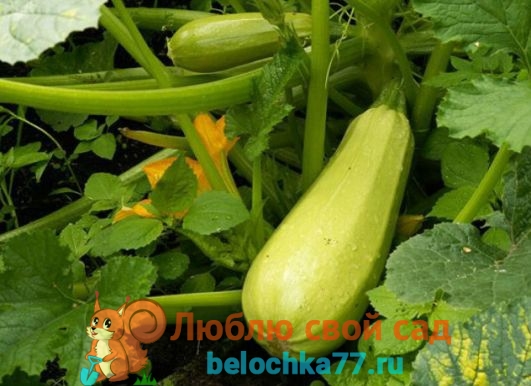
For abundant fruiting, the best predecessors for zucchini are garlic, tomatoes, dill, potatoes, peas. These crops take completely different substances from the soil for nutrition, and those necessary for zucchini remain in the ground.
After harvesting, crops (garlic, peas, beans, beans) are planted on this site, which allow you to renew and disinfect the soil.

In place of zucchini, garlic, tomato, mustard and onions, you can plant peas. It is impossible to plant peas in the place where beans and beans are grown. After growing a tomato, useful substances remain in the soil, which are the development and growth of peas.
When growing peas, you need to monitor watering, an excess of moisture leads to root rot and soil damage for the next 4 years. Peas easily get along with melons and nightshade crops.
This plant belongs to legumes, and when it is planted, the earth is enriched with nitrogen. In place of peas, zucchini, pumpkin, tomatoes, eggplant, physalis, potatoes, greens, cabbage and carrots will feel good.
Properly designed crop rotation allows you to reduce the amount of necessary fertilizers and chemicals for plant protection, and also allows you to get a good harvest of all crops.





